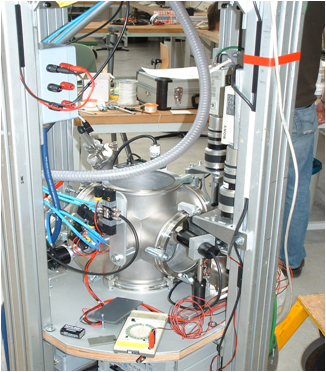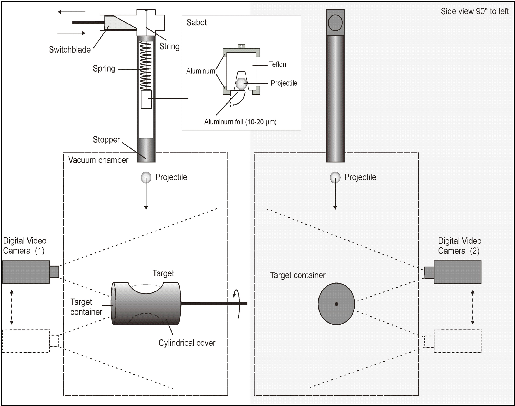dust ejection by elastic waves during medium velocity dust impacts into dust targets (EJECT)

research area: astrophysics
experiment title:
Dust Ejection by Elastic Waves during Medium Velocity Dust Impacts into Dust Targets
experiment acronym: EJECT
funding agency: ESA
grant number: CORA program
performing organization:
Institut für Planetologie, Universität Münster
prime investigator:
Gerhard Wurm, Oliver Krauß, Georgi B. Paraskov
experiment objective
abstract
It is widely accepted that planetesimals as precursors to planets form in a growth process, where two dusty bodies collide and form a larger one. As bodies grow to several cm in size, collision velocities can reach up to several tens of m/s. It is a fundamental problem for planet formation how growth can proceed at these high impact velocities. In recent laboratory measurements we observed a phenomenon not considered before. In very porous targets large amounts of dust can be ejected very slowly. We attributed this to elastic waves generated by a dust impact. This will have a very significant effect on growth models. Under gravity we were not able to answer basic questions which did arise from the experiments. What amount of material is ejected? What size of fragments is ejected? What happens at the bottom of the target?
related publications
- G. Wurm, G. Paraskov, O. Krauss, (2004), "On the Importance of Gas Flow through Porous Bodies for the Formation of Planetesimals", Astrophysical Journal, Vol. 606, pp. 983-987
- G. Wurm, G. Paraskov, O. Krauss, (2005), "Growth of Planetesimals by Impacts at ~25m/s", Icarus, Vol. 178, pp. 253-263
- G. Wurm, G. Paraskov, O. Krauss, (2005), "Ejection of Dust by Elastic Waves in Collisions between Millimeter- and Centimeter-sized Dust Aggregates at 16.5 to 37.5m/s Impact Velocities", Physical Review E, Vol. 71, pp. 021304 1-10
- Paraskov, G. B., Wurm, G., Krauss, O., (2007), "Impacts into weak dust targets under microgravity and the formation of planetesimals", Icarus 191, 779-789
experimental setup

experiment campaigns
experiment year: 2005
number of drops: 16


 "
"